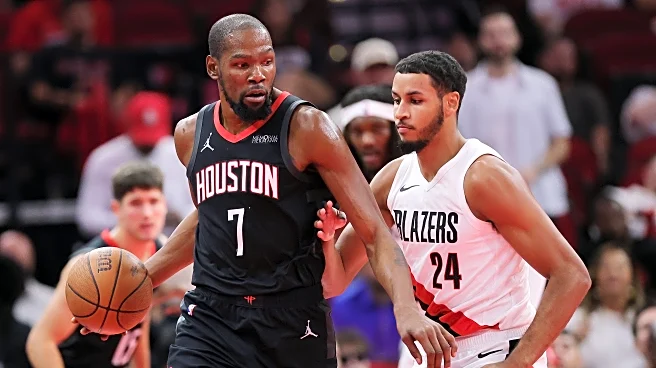What's Happening?
The NBA's 2025-26 season has opened with a series of high-scoring games and overtime finishes, setting new records. Notably, five players have achieved 50-point games, and twenty players have scored 40 points in a game, both records for the first month
of a season. The Mavericks' victory over the Trail Blazers in overtime was part of this trend, with Cooper Flagg playing a pivotal role. The Rockets, Jazz, and Mavericks all secured wins in overtime, showcasing the competitive nature of the league. Key players like Kevin Durant, Lauri Markkanen, and Cooper Flagg have been instrumental in these thrilling finishes.
Why It's Important?
These record-breaking performances highlight the increasing competitiveness and talent within the NBA. The ability of players to consistently deliver high-scoring games and clutch performances in overtime reflects the league's dynamic nature. This trend may attract more viewership and increase fan engagement, benefiting the NBA's commercial interests. Additionally, the emergence of young talents like Cooper Flagg suggests a promising future for the league, potentially influencing team strategies and player development.
What's Next?
As the season progresses, teams will likely focus on maintaining their competitive edge and leveraging their star players' abilities in crucial moments. The Mavericks, Rockets, and Jazz will aim to build on their recent successes and address any areas for improvement. The league may see more record-breaking performances as players continue to push the boundaries of their capabilities. Teams will also strategize to capitalize on the momentum generated by these early-season victories.
Beyond the Headlines
The trend of high-scoring games and overtime finishes may lead to a reevaluation of defensive strategies across the league. Coaches might prioritize defensive improvements to counteract the offensive prowess displayed by players. Additionally, the focus on young talents like Cooper Flagg could influence the NBA's approach to player recruitment and development, potentially leading to a shift in how teams build their rosters for long-term success.
















